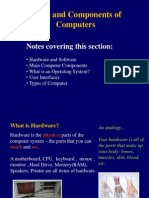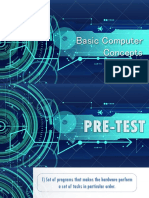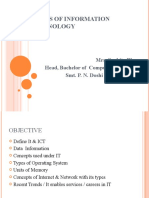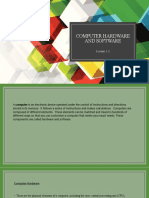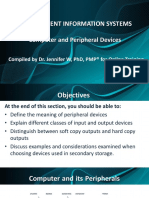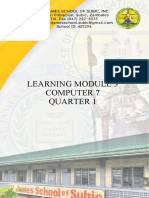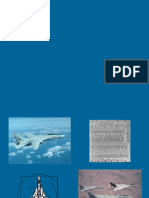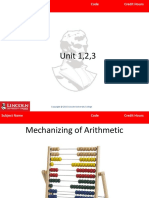0% found this document useful (0 votes)
7 views29 pagesWeek 1 - Lecture 2
The document provides an introduction to IT skills, focusing on the information processing cycle, parts of a computer, and the distinction between hardware and software. It outlines the functions of various computer components, including processing, memory, storage, and input/output devices, as well as the types of software, such as system and application software. Additionally, it describes the role of operating systems and user interfaces in managing hardware and facilitating user interaction.
Uploaded by
Muhammad KashifCopyright
© © All Rights Reserved
We take content rights seriously. If you suspect this is your content, claim it here.
Available Formats
Download as PDF, TXT or read online on Scribd
0% found this document useful (0 votes)
7 views29 pagesWeek 1 - Lecture 2
The document provides an introduction to IT skills, focusing on the information processing cycle, parts of a computer, and the distinction between hardware and software. It outlines the functions of various computer components, including processing, memory, storage, and input/output devices, as well as the types of software, such as system and application software. Additionally, it describes the role of operating systems and user interfaces in managing hardware and facilitating user interaction.
Uploaded by
Muhammad KashifCopyright
© © All Rights Reserved
We take content rights seriously. If you suspect this is your content, claim it here.
Available Formats
Download as PDF, TXT or read online on Scribd
/ 29

















